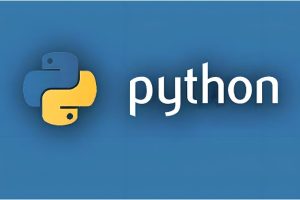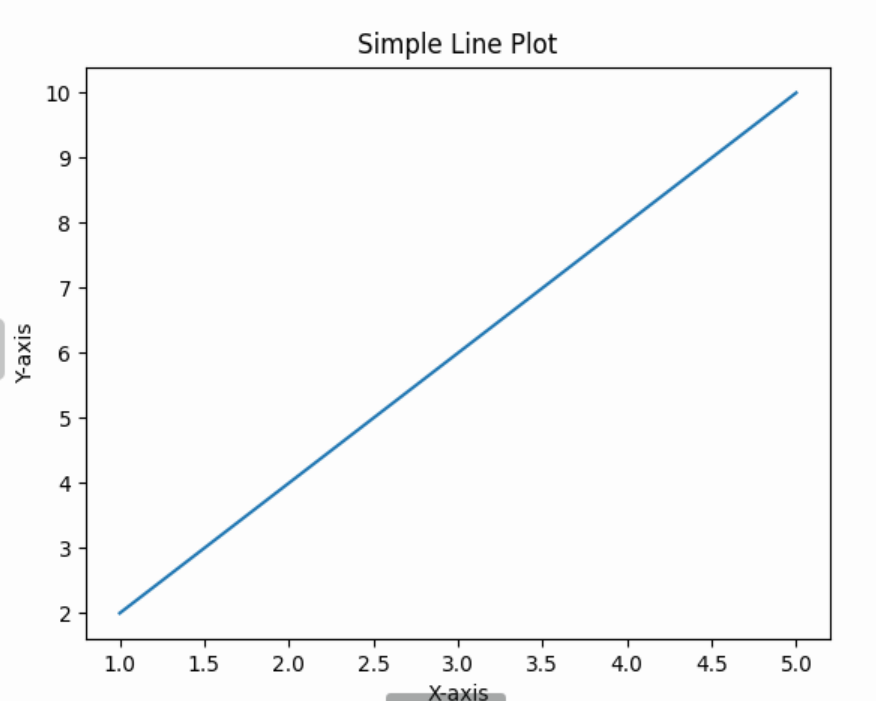python正则表达式的应用方法
好的!Python 中的正则表达式是一个非常强大的工具,用于字符串匹配、搜索、替换等操作。以下是对 Python 正则表达式的详细使用方法和一些常见案例的介绍。
1. 正则表达式的基本概念
1.1 什么是正则表达式?
正则表达式(Regular Expression,简称 regex)是一种用于匹配字符串中字符组合的模式。它由一系列字符和特殊符号组成,用于定义字符串的搜索模式。
1.2 常见的正则表达式符号
以下是一些常用的正则表达式符号及其含义:
| 符号 | 含义 |
|---|---|
. | 匹配任意单个字符(除了换行符) |
* | 匹配前面的字符或子模式零次或多次 |
+ | 匹配前面的字符或子模式一次或多次 |
? | 匹配前面的字符或子模式零次或一次 |
^ | 匹配字符串的开头 |
$ | 匹配字符串的结尾 |
[ ] | 匹配括号内的任意一个字符 |
[^ ] | 匹配不在括号内的任意一个字符 |
\d | 匹配任意数字(等价于 [0-9]) |
\w | 匹配任意字母或数字(等价于 [a-zA-Z0-9_]) |
\s | 匹配任意空白字符(空格、制表符、换行符等) |
\b | 匹配单词边界 |
() | 捕获组,用于分组和捕获匹配的内容 |
| | 逻辑“或”操作,匹配多个模式中的任意一个 |
2. Python 中的正则表达式模块
Python 提供了一个内置模块 re,用于处理正则表达式。以下是 re 模块中常用的方法:
2.1 re.compile(pattern)
将正则表达式编译为一个正则表达式对象,便于多次使用。
import re
pattern = re.compile(r'\d+')2.2 re.search(pattern, string)
在字符串中搜索第一个匹配的子字符串。如果找到匹配项,返回一个匹配对象;否则返回 None。
result = re.search(r'\d+', 'abc123def')
if result:
print(result.group()) # 输出匹配的内容2.3 re.match(pattern, string)
从字符串的开头开始匹配正则表达式。如果开头匹配成功,返回一个匹配对象;否则返回 None。
result = re.match(r'\d+', '123abc')
if result:
print(result.group()) # 输出匹配的内容2.4 re.findall(pattern, string)
返回字符串中所有匹配的子字符串,作为一个列表返回。
matches = re.findall(r'\d+', 'abc123def456')
print(matches) # 输出 ['123', '456']2.5 re.finditer(pattern, string)
返回一个迭代器,其中包含所有匹配的匹配对象。
for match in re.finditer(r'\d+', 'abc123def456'):
print(match.group()) # 输出匹配的内容2.6 re.sub(pattern, repl, string)
将字符串中所有匹配的子字符串替换为指定的内容。
result = re.sub(r'\d+', 'X', 'abc123def456')
print(result) # 输出 'abcXdefX'2.7 re.split(pattern, string)
根据正则表达式分隔字符串,返回一个列表。
result = re.split(r'\d+', 'abc123def456')
print(result) # 输出 ['abc', 'def', '']3. 常见的正则表达式使用案例
3.1 匹配电子邮件地址
电子邮件地址的格式通常是 username@domain,其中用户名部分可以包含字母、数字、下划线、点号等,域名部分通常是字母和点号的组合。
email_pattern = r'^[a-zA-Z0-9_.+-]+@[a-zA-Z0-9-]+\.[a-zA-Z0-9-.]+$'
emails = ["test@example.com", "invalid-email", "another.test@domain.co.uk"]
for email in emails:
if re.match(email_pattern, email):
print(f"{email} is valid")
else:
print(f"{email} is invalid")3.2 匹配电话号码
电话号码的格式可能因地区而异,但常见的格式是 + 号开头,后面跟着国家代码和电话号码。
phone_pattern = r'^\+?(\d{1,3})?[-.\s]?\(?\d{3}\)?[-.\s]?\d{3}[-.\s]?\d{4}$'
phones = ["+1 123-456-7890", "123.456.7890", "123 456 7890", "invalid-phone"]
for phone in phones:
if re.match(phone_pattern, phone):
print(f"{phone} is valid")
else:
print(f"{phone} is invalid")3.3 提取 HTML 标签中的内容
假设有一个 HTML 字符串,我们想提取所有 <div> 标签中的内容。
html = "<div>Content 1</div><div>Content 2</div>"
matches = re.findall(r'<div>(.*?)</div>', html)
print(matches) # 输出 ['Content 1', 'Content 2']3.4 替换文本中的敏感信息
假设我们想将文本中的身份证号替换为 ***。
text = "My ID is 123456789012345678 and your ID is 876543210987654321."
result = re.sub(r'\d{18}', '***', text)
print(result) # 输出 'My ID is *** and your ID is ***.'3.5 分割字符串
假设我们想根据逗号或空格分割字符串。
text = "apple, banana orange,grape"
result = re.split(r'[,\s]+', text)
print(result) # 输出 ['apple', 'banana', 'orange', 'grape']4. 注意事项
4.1 贪婪模式与非贪婪模式
- 默认情况下,正则表达式是贪婪的,会尽可能多地匹配字符。
- 使用
?可以将贪婪模式变为非贪婪模式,例如.*是贪婪的,而.*?是非贪婪的。
4.2 转义特殊字符
如果需要匹配正则表达式中的特殊字符(如 .、*、? 等),需要使用反斜杠 \ 进行转义。例如:
re.search(r'\.', 'abc.def') # 匹配点号4.3 使用原始字符串
在正则表达式中,反斜杠 \ 是转义字符,为了避免混淆,建议使用原始字符串(在字符串前加 r):
pattern = r'\d+' # 原始字符串4.4 性能优化
- 如果需要多次使用同一个正则表达式,建议使用
re.compile()编译正则表达式对象。 - 避免使用过于复杂的正则表达式,以免导致性能问题。
5. 进阶技巧
5.1 捕获组与非捕获组
- 捕获组:使用
()包裹的部分,匹配的内容会被捕获并可以使用group()方法获取。 - 非捕获组:使用
(?:...)包裹的部分,匹配的内容不会被捕获。
text = "abc123def456"
matches = re.findall(r'(abc)(\d+)', text)
print(matches) # 输出 [('abc', '123')]
matches = re.findall(r'(?:abc)\d+', text)
print(matches) # 输出 ['abc123']5.2 前瞻和后顾
- 前瞻(Lookahead):
(?=...)表示匹配的字符后面必须符合某个条件,但不捕获这部分内容。 - 后顾(Lookbehind):
(?<=...)表示匹配的字符前面必须符合某个条件,但不捕获这部分内容。
text = "abc123def好的,我们继续深入探讨正则表达式的进阶技巧和更多使用案例。
5.3 前瞻和后顾(Lookahead 和 Lookbehind)
5.3.1 前瞻(Lookahead)
- 正向前瞻:
(?=...),表示匹配的字符后面必须符合某个条件,但不捕获这部分内容。 - 负向前瞻:
(?!...),表示匹配的字符后面不能符合某个条件。
示例:匹配以数字结尾的单词
text = "abc123 def456 ghi789 jkl"
# 匹配以数字结尾的单词
pattern = r'\b\w+(?=\d)\b'
matches = re.findall(pattern, text)
print(matches) # 输出 ['abc123', 'def456', 'ghi789']示例:匹配不以数字结尾的单词
text = "abc123 def456 ghi789 jkl"
# 匹配不以数字结尾的单词
pattern = r'\b\w+(?!\d)\b'
matches = re.findall(pattern, text)
print(matches) # 输出 ['jkl']5.3.2 后顾(Lookbehind)
- 正向后顾:
(?<=...),表示匹配的字符前面必须符合某个条件,但不捕获这部分内容。 - 负向后顾:
(?<!...),表示匹配的字符前面不能符合某个条件。
示例:匹配以字母开头的单词
text = "abc123 def456 ghi789 jkl"
# 匹配以字母开头的单词
pattern = r'(?<=\b\w)\w+'
matches = re.findall(pattern, text)
print(matches) # 输出 ['bc123', 'ef456', 'hi789', 'kl']示例:匹配不以字母开头的单词
text = "123abc 456def 789ghi jkl"
# 匹配不以字母开头的单词
pattern = r'(?<!\b\w)\w+'
matches = re.findall(pattern, text)
print(matches) # 输出 ['123', '456', '789']5.4 使用正则表达式进行复杂的文本处理
5.4.1 替换文本中的特定模式
假设我们有一个文本文件,其中包含日期格式为 YYYY-MM-DD,我们希望将其替换为 DD-MM-YYYY。
text = "The event will take place on 2023-07-26 and end on 2023-07-30."
# 替换日期格式
pattern = r'(\d{4})-(\d{2})-(\d{2})'
replaced_text = re.sub(pattern, r'\3-\2-\1', text)
print(replaced_text) # 输出 'The event will take place on 26-07-2023 and end on 30-07-2023.'5.4.2 提取特定格式的数据
假设我们有一个日志文件,每行的格式为 timestamp - level - message,例如:
2023-07-26 12:00:00 - INFO - This is an info message.
2023-07-26 12:01:00 - ERROR - This is an error message.我们希望提取出所有 ERROR 级别的日志消息。
log_text = """2023-07-26 12:00:00 - INFO - This is an info message.
2023-07-26 12:01:00 - ERROR - This is an error message."""
# 提取 ERROR 级别的日志
pattern = r'\d{4}-\d{2}-\d{2} \d{2}:\d{2}:\d{2} - ERROR - (.*)'
matches = re.findall(pattern, log_text)
print(matches) # 输出 ['This is an error message.']5.5 处理多行文本
在处理多行文本时,re 模块提供了一些有用的标志:
re.MULTILINE:使^和$匹配每一行的开头和结尾,而不仅仅是整个字符串的开头和结尾。re.DOTALL:使.匹配任意字符,包括换行符。
示例:匹配多行文本中的特定模式
假设我们有一个多行字符串,我们希望匹配每一行的开头和结尾。
text = """This is the first line.
This is the second line.
This is the third line."""
# 匹配每一行的开头和结尾
pattern = r'^This.*line\.$'
matches = re.findall(pattern, text, re.MULTILINE)
print(matches) # 输出 ['This is the first line.', 'This is the second line.', 'This is the third line.']5.6 使用正则表达式进行验证
正则表达式常用于验证用户输入是否符合特定格式,例如验证密码强度、邮箱格式等。
5.6.1 验证密码强度
假设密码必须包含至少 8 个字符,包含大写字母、小写字母、数字和特殊字符。
password_pattern = r'^(?=.*[a-z])(?=.*[A-Z])(?=.*\d)(?=.*[@$!%*?&])[A-Za-z\d@$!%*?&]{8,}$'
passwords = ["Password123!", "weak", "StrongP@ssw0rd"]
for password in passwords:
if re.match(password_pattern, password):
print(f"{password} is a strong password.")
else:
print(f"{password} is not a strong password.")5.7 使用正则表达式进行分组和命名捕获
正则表达式支持分组和命名捕获,这使得提取特定部分的内容更加方便。
5.7.1 分组
使用 () 对匹配的部分进行分组,可以通过 group() 方法获取分组的内容。
示例:提取日期的年、月、日
text = "The event will take place on 2023-07-26."
pattern = r'(\d{4})-(\d{2})-(\d{2})'
match = re.search(pattern, text)
if match:
year, month, day = match.groups()
print(f"Year: {year}, Month: {month}, Day: {day}")5.7.2 命名捕获
使用 (?P<name>...) 对匹配的部分进行命名捕获,可以通过 groupdict() 方法获取命名捕获的内容。
示例:提取日期的年、月、日并命名捕获
text = "The event will take place on 2023-07-26."
pattern = r'(?P<year>\d{4})-(?P<month>\d{2})-(?P<day>\d{2})'
match = re.search(pattern, text)
if match:
print(match.groupdict()) # 输出 {'year': '2023', 'month': '07', 'day': '26'}5.8 使用正则表达式进行条件匹配
正则表达式支持条件匹配,即根据某些条件动态调整匹配规则。
5.8.1 条件匹配示例
假设我们希望匹配以 http:// 或 https:// 开头的 URL。
text = "Visit our website at http://example.com or https://secure.example.com."
pattern = r'https?://[a-zA-Z0-9.-]+\.[a-zA-Z]{2,}'
matches = re.findall(pattern, text)
print(matches) # 输出 ['http://example.com', 'https://secure.example.com']5.9 使用正则表达式进行复杂文本解析
正则表达式可以用于解析复杂的文本格式,例如解析 JSON 或 XML。
5.9.1 解析 JSON 格式的字符串
假设我们有一个简单的 JSON 格式的字符串,我们希望提取其中的键值对。
text = '{"name": "John", "age": 30, "city": "New York"}'
# 提取键值对
pattern = r'"(\w+)":\s*"(\w+)"'
matches = re.findall(pattern, text)
print(dict(matches)) # 输出 {'name': 'John', 'city': 'New York'}5.10 使用正则表达式进行文本清理
正则表达式可以用于清理文本中的多余字符或格式化文本
好的!我们继续深入探讨正则表达式在文本清理和复杂模式匹配中的应用,以及一些高级技巧。
5.11 使用正则表达式进行文本清理
5.11.1 去除多余空格
在处理文本时,经常需要去除多余的空格,例如多余的行首、行尾空格或多余的连续空格。
示例:去除多余空格
text = " This is a test string. "
# 去除行首和行尾的空格
text = re.sub(r'^\s+|\s+$', '', text)
# 去除多余的连续空格
text = re.sub(r'\s+', ' ', text)
print(text) # 输出 "This is a test string."5.11.2 去除 HTML 标签
如果需要从 HTML 文本中提取纯文本内容,可以使用正则表达式去除 HTML 标签。
示例:去除 HTML 标签
html_text = "<html><body><h1>Hello, <b>World</b>!</h1><p>This is a <a href='#'>link</a>.</p></body></html>"
# 去除 HTML 标签
clean_text = re.sub(r'<[^>]+>', '', html_text)
print(clean_text) # 输出 "Hello, World! This is a link."5.11.3 替换特殊字符
在某些情况下,可能需要将文本中的特殊字符替换为其他字符,例如将制表符替换为空格。
示例:替换特殊字符
text = "This\tis\ta\ttest\tstring."
# 将制表符替换为空格
text = re.sub(r'\t', ' ', text)
print(text) # 输出 "This is a test string."5.12 复杂模式匹配
5.12.1 匹配嵌套结构
正则表达式本身并不擅长匹配嵌套结构(如嵌套的括号或嵌套的 HTML 标签),但可以通过一些技巧来处理简单的嵌套。
示例:匹配嵌套的括号
假设我们需要匹配括号内的内容,但括号可能嵌套。
text = "(This is (a nested) example) with (multiple (levels) of nesting)."
# 匹配嵌套的括号
pattern = r'\(([^()]*(\([^()]*\))?[^()]*)\)'
matches = re.findall(pattern, text)
print(matches) # 输出 [('This is (a nested) example', 'a nested'), ('multiple (levels) of nesting', 'levels')]5.12.2 匹配多级嵌套结构
对于更复杂的嵌套结构,正则表达式可能无法完全解决问题,此时可以结合其他编程逻辑来处理。
示例:解析嵌套的 JSON 格式
假设我们有一个嵌套的 JSON 字符串,需要提取特定的键值对。
import json
text = '{"name": "John", "age": 30, "address": {"city": "New York", "zip": "10001"}}'
# 解析 JSON
data = json.loads(text)
# 提取嵌套的键值对
city = data['address']['city']
zip_code = data['address']['zip']
print(f"City: {city}, Zip Code: {zip_code}")5.13 使用正则表达式进行模式替换
5.13.1 替换模式中的特定部分
在某些情况下,我们可能需要替换匹配模式中的特定部分,而不是整个匹配内容。
示例:替换日期格式中的部分
假设我们有一个日期字符串,格式为 YYYY-MM-DD,我们希望将年份替换为 2024。
text = "The event will take place on 2023-07-26."
# 替换日期中的年份
pattern = r'(\d{4})-(\d{2})-(\d{2})'
replaced_text = re.sub(pattern, lambda m: f"2024-{m.group(2)}-{m.group(3)}", text)
print(replaced_text) # 输出 "The event will take place on 2024-07-26."5.13.2 动态替换
在某些情况下,替换内容可能需要根据匹配的内容动态生成。
示例:动态替换文本中的数字
假设我们需要将文本中的数字乘以 2。
text = "The numbers are 1, 2, and 3."
# 动态替换数字
pattern = r'\d+'
replaced_text = re.sub(pattern, lambda m: str(int(m.group(0)) * 2), text)
print(replaced_text) # 输出 "The numbers are 2, 4, and 6."5.14 使用正则表达式进行模式验证
5.14.1 验证电话号码
电话号码的格式可能因地区而异,但常见的格式是 + 号开头,后面跟着国家代码和电话号码。
示例:验证电话号码
phone_pattern = r'^\+?(\d{1,3})?[-.\s]?\(?\d{3}\)?[-.\s]?\d{3}[-.\s]?\d{4}$'
phones = ["+1 123-456-7890", "123.456.7890", "123 456 7890", "invalid-phone"]
for phone in phones:
if re.match(phone_pattern, phone):
print(f"{phone} is valid")
else:
print(f"{phone} is invalid")5.14.2 验证 IP 地址
IP 地址的格式通常是 XXX.XXX.XXX.XXX,其中每个部分的值在 0 到 255 之间。
示例:验证 IPv4 地址
ip_pattern = r'^(25[0-5]|2[0-4][0-9]|[01]?[0-9][0-9]?)\.(25[0-5]|2[0-4][0-9]|[01]?[0-9][0-9]?)\.(25[0-5]|2[0-4][0-9]|[01]?[0-9][0-9]?)\.(25[0-5]|2[0-4][0-9]|[01]?[0-9][0-9]?)$'
ips = ["192.168.1.1", "255.255.255.255", "256.1.1.1", "invalid-ip"]
for ip in ips:
if re.match(ip_pattern, ip):
print(f"{ip} is valid")
else:
print(f"{ip} is invalid")5.15 使用正则表达式进行模式提取
5.15.1 提取特定格式的数据
假设我们有一个日志文件,每行的格式为 timestamp - level - message,例如:
2023-07-26 12:00:00 - INFO - This is an info message.
2023-07-26 12:01:00 - ERROR - This is an error message.我们希望提取出所有 ERROR 级别的日志消息。
示例:提取 ERROR 级别的日志
log_text = """2023-07-26 12:00:00 - INFO - This is an info message.
2023-07-26 12:01:00 - ERROR - This is an error message."""
# 提取 ERROR 级别的日志
pattern = r'\d{4}-\d{2}-\d{2} \d{2}:\d{2}:\d{2} - ERROR - (.*)'
matches = re.findall(pattern, log_text)
print(matches) # 输出 ['This is an error message.']5.15.2 提取嵌套结构中的数据
假设我们有一个嵌套的 JSON 字符串,需要提取特定的键值对。
示例:提取嵌套 JSON 中的数据
import json
text = '{"name": "John", "age": 30, "address": {"city": "New York", "zip": "10001"}}'
# 解析 JSON
data = json.loads(text)
# 提取嵌套的键值对
city = data['address']['city']
zip_code = data['address']['zip']
print(f"City





